Motorways and urban paths are on the fast-track to green innovation
So much 21st-century landscape architecture is designed to compensate for 20th-century sins, it might as well be an industry slogan. Some of the worst offenders? Urban motorways. The pivot to cars in the last midcentury prioritised four-wheeled transport over the two-legged kind. Whizzing motorists through town alienated people from the centre, cutting off communities from their neighbours and often from the city’s raison d’etre: its water source. Among the lessons we learned was that burying blacktop would be costly, time-sucking and dangerous (say hello to Boston’s US$24 billion Big Dig). Today’s practice of adapting, removing and ‘greening’ ill-conceived urban motorways is practically a genre in itself. Even neighbourhoods barely affected by vehicular traffic are having a go at this trend for injecting green pathways into urban districts – the new Tide elevated park in North Greenwich, London, resembles a repurposed overpass where there was none. As New York’s super popular High Line did for redeveloped elevated railway lines, these projects have done for their cause, using any means their governments will allow...
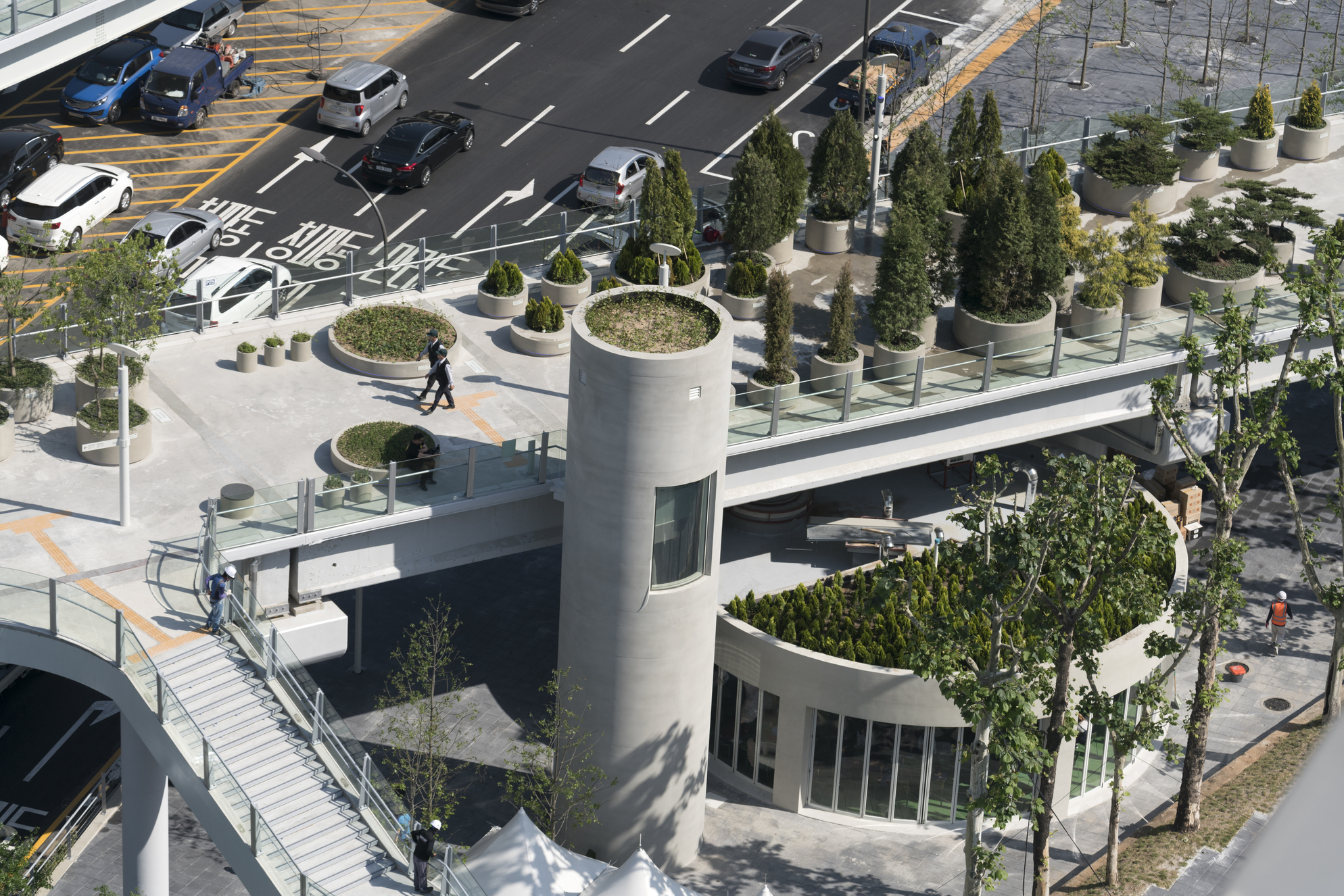
SeoulLo 7017 SkyGarden, Seoul
A handful of subway lines converge beneath this disused overpass in central Seoul, so pulling it out of circulation didn’t create much congestion – unless you’re counting people. Handing over 1,000 sq m to Dutch architects MVRDV attracted pedestrians to a foreboding, traffic-clogged part of downtown. The lure? The opportunity to explore 24,000 plants – the largest variety of native species open to the Korean public. MVRDV organised the flora in ‘neighbourhoods', or families, and planted in alphabetical order, like a botanical garden. Tea pavilions break up the 1km journey.
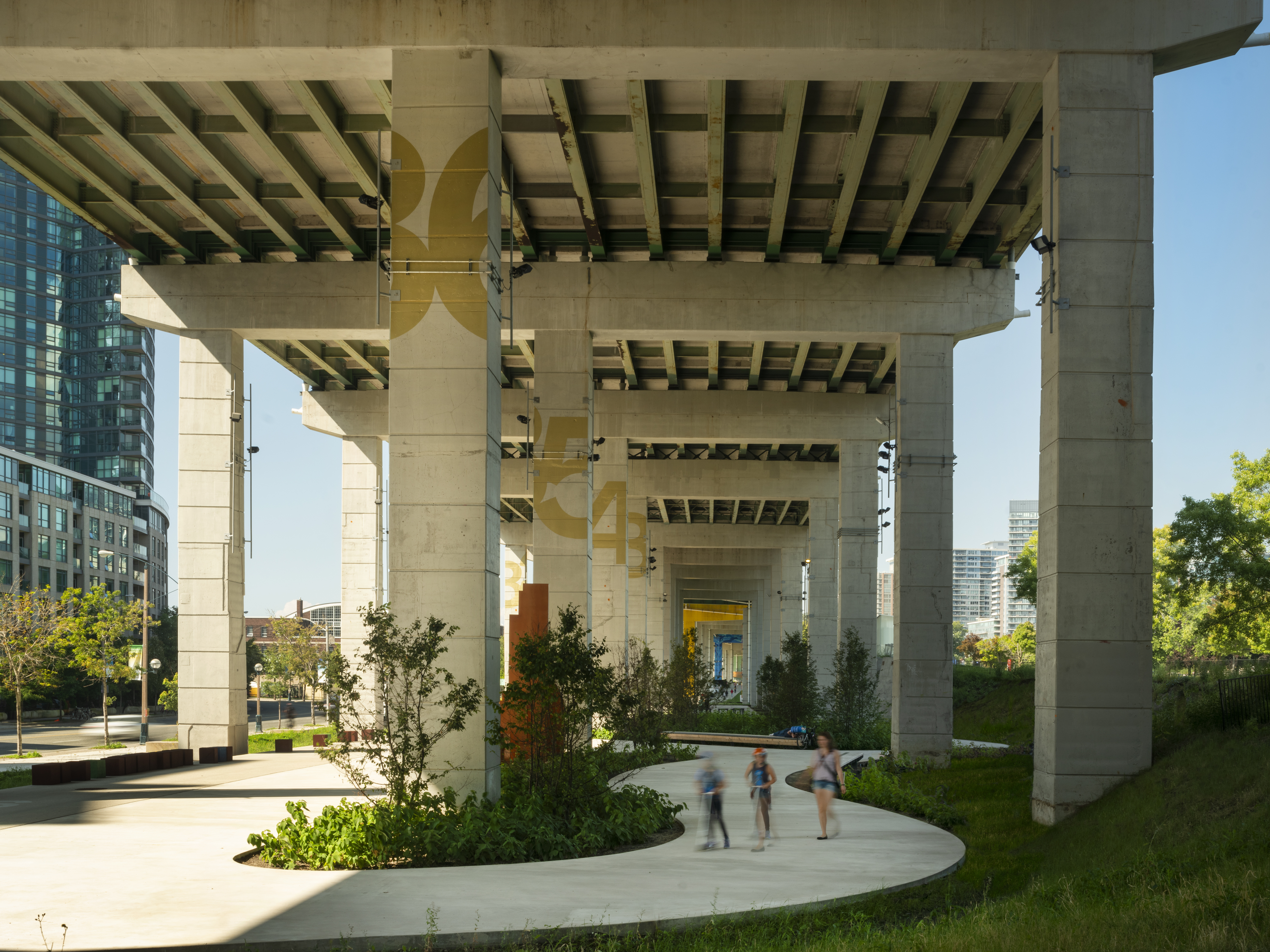
The Bentway, Toronto
Toronto lost its views to Lake Ontario when the 13-metre-high Gardiner Expressway was built in 1958, slicing off the lakeshore. Recently, public bodies on both sides of the motorway worked together to hire urban designer Ken Greenberg and landscape architects Public Work to create a mile-long park under the cover of the road.
The Bentway incorporates outdoor seating, public art, an amphitheatre and a skate park, making the journey between city and lake far less ominous.

Projet Bonaventure, Montreal
The 1960s provided Montreal with unforgettable Brutalist architecture at the expense of massive tracts of wasteland. New roadworks swept suburbanites along the Lachine Canal into downtown past decaying postindustrial blight.
Landscape architect Luu Nguyen, together with urbanists Rousseau Lefebvre, reimagined a blustery junction with a series of islands supporting native plants, loungers, fitness equipment and playgrounds. A sculpture park headlined by Catalan artist Jaume Plensa draws pedestrians from the old town into Griffintown and Little Burgundy, now deep into gentrification.
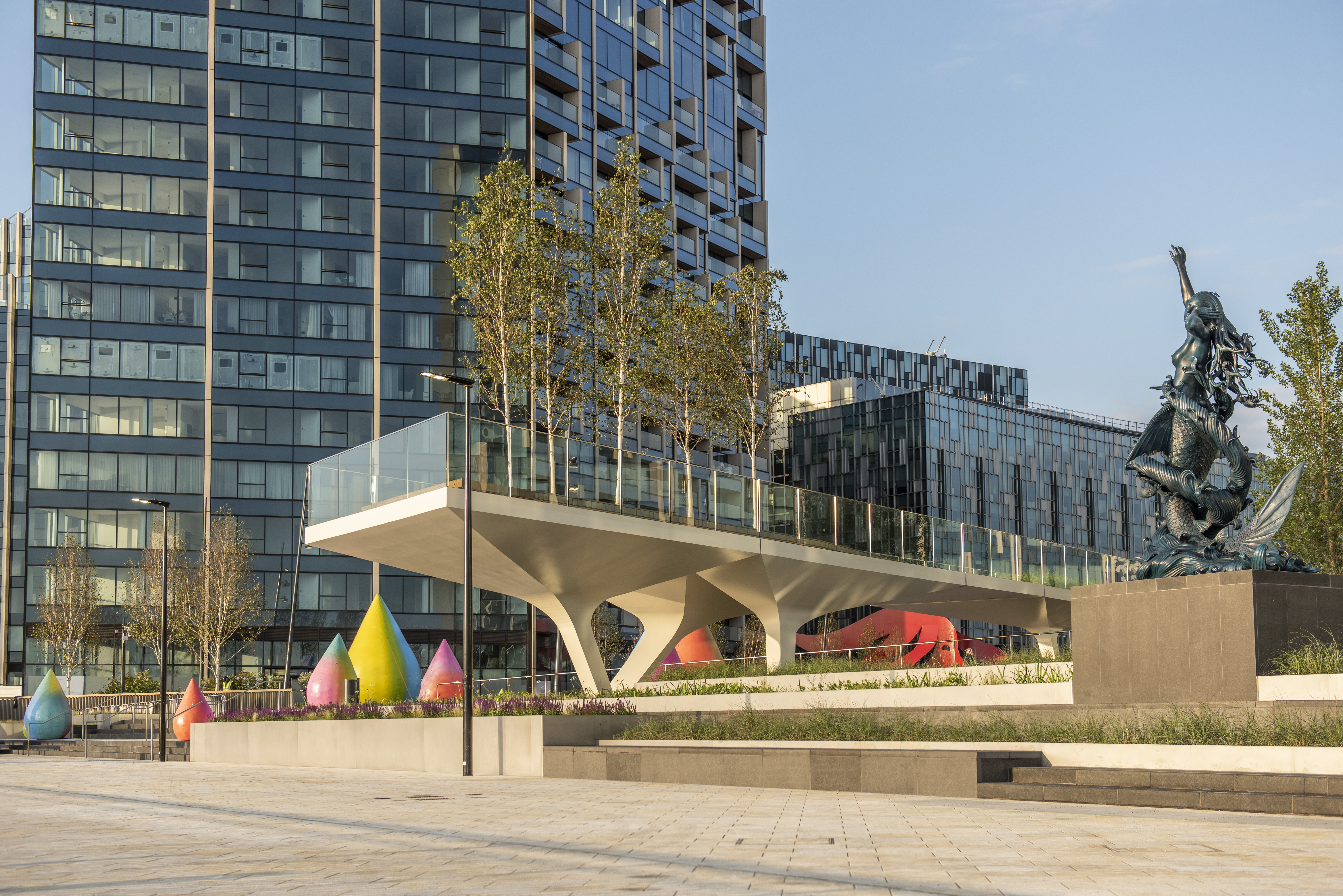
The Tide, London
Despite being purpose built, the Tide winds upward nine metres to better take in artworks by Damien Hirst, Gary Hume and Antony Gormley along its one-kilometre stretch (a further 4k will be completed next year). It moves the neighbourhood’s centre of gravity away from the O2 centre and toward the Thames-side Jetty.
It’s no surprise architects Diller, Scofidio & Renfro riffed on the High Line when drafting The Tide, the new elevated walkway in North Greenwich (completed in collaboration with Neiheiser Argyros). They were, after all, co-designers of New York’s first linear park.
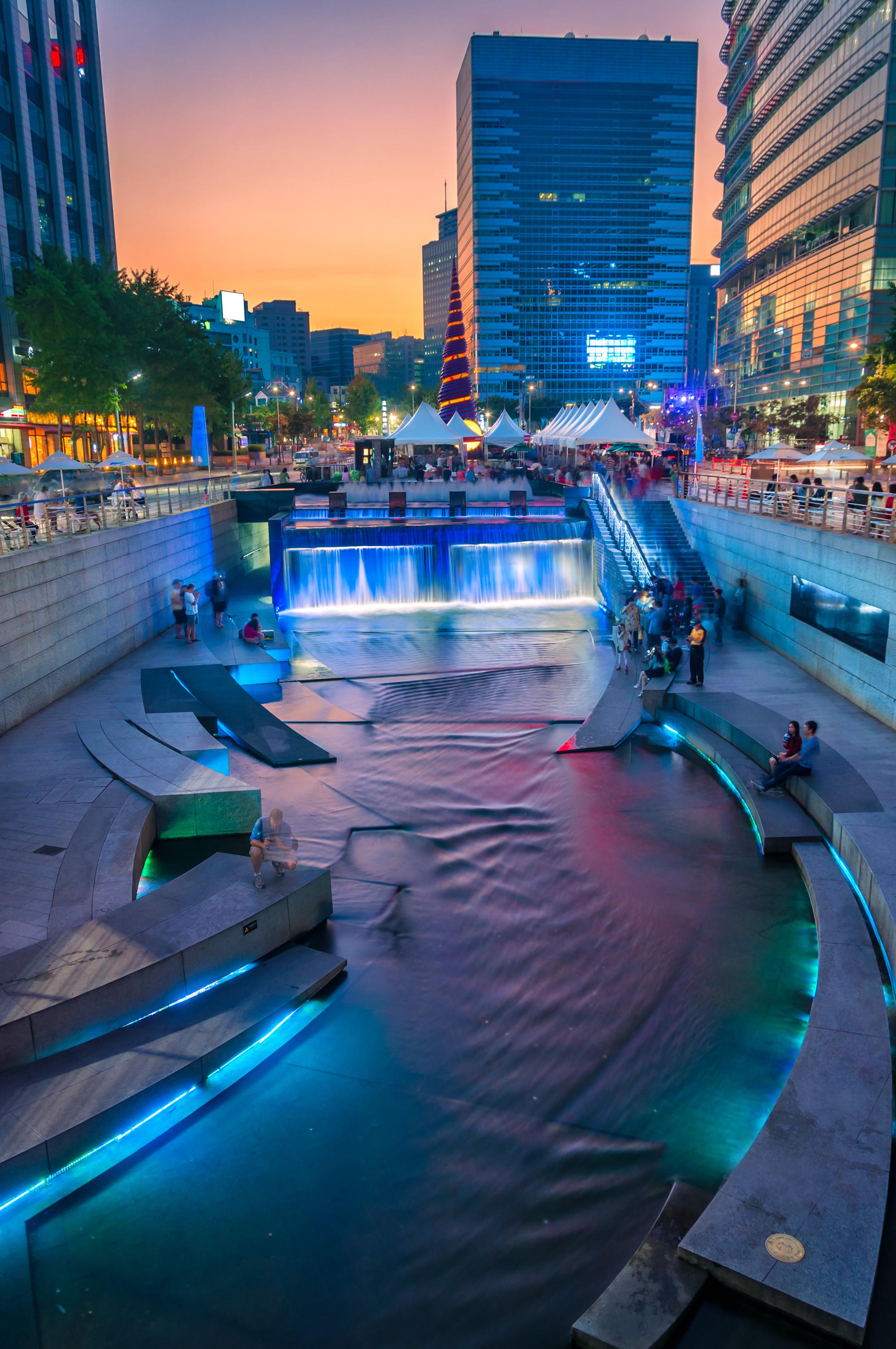
Cheonggyecheon Park, Seoul
A serial offender in the annals of poor 20th-century planning, Seoul paved over its east-west Cheonggyecheon River, then built an elevated highway above, engineering a massive no-go zone.
Its rescue effort rewrote the rules. In the early-Aughts the city unearthed and landscaped 3.6 miles of waterway then diverted traffic and transformed the motorway into parkland. It’s now a safe haven for wildlife and, thanks to dedicated public transport, people.
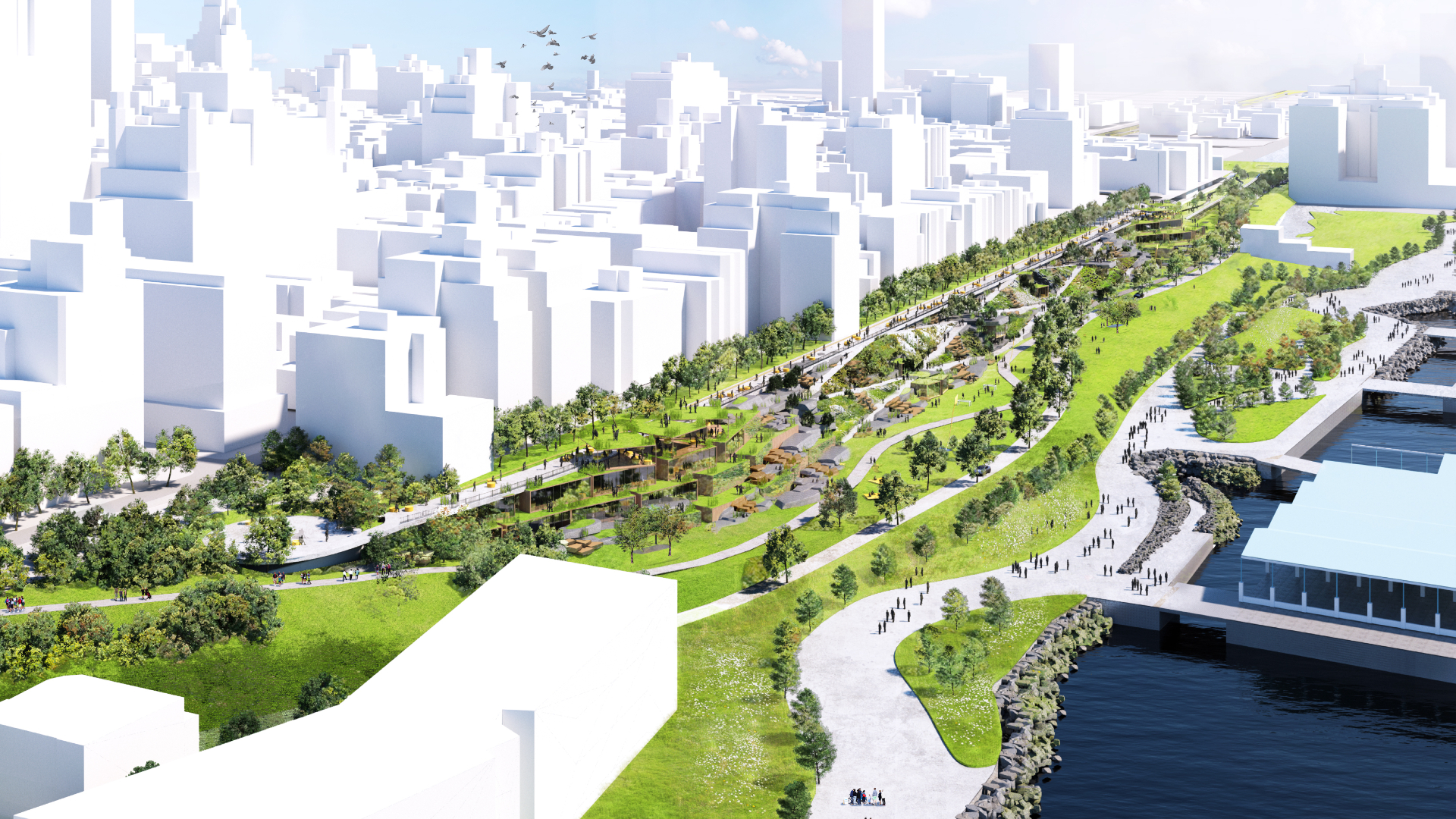
BQP, New York
The Brooklyn-Queens Expressway (BQE) is one of the most divisive elevated freeways devised by ‘master builder' Robert Moses in the midcentury. Among those who have weighed in on its revamp is Bjarke Ingels of BIG, with a scheme called BQP, an acronym that emphasises ‘parkland' rather than ‘expressway'. Ingels proposes diverting traffic to a wide boulevard alongside Brooklyn’s East River, then landscaping overtop the old and new roads. Ten acres of parkland would blanket the new riverside road, and an additional linear park would follow the route of the former expressway.
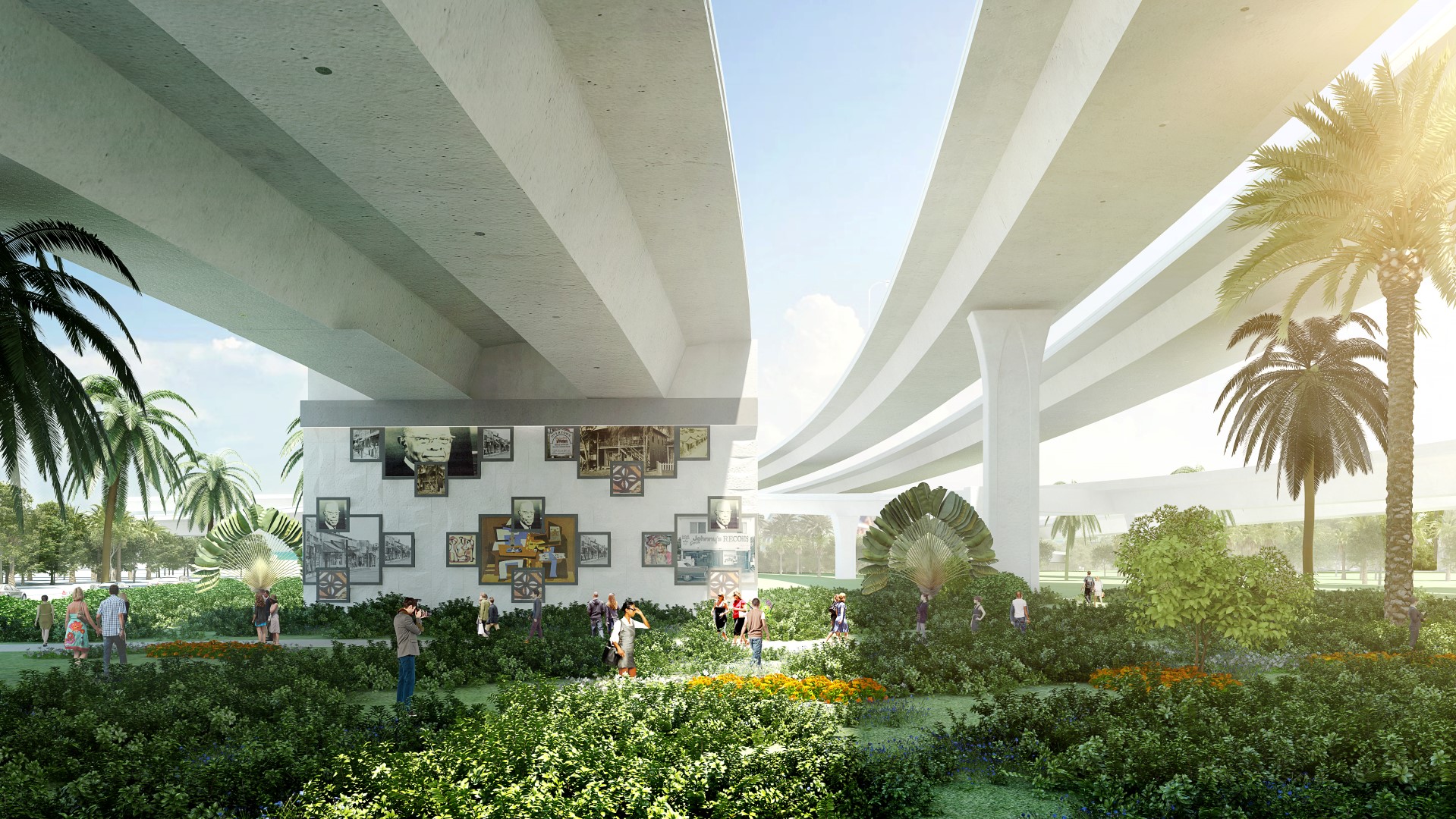
i395, Miami
Miami would be unnavigable without its expressways, which skirt Biscayne Bay and divide neighbourhoods like frontiers. Getting rid of them would throw the city into chaos, so engineers are double-deckering a heavily used stretch of Interstate 395, culminating with the multi-arch Signature Bridge.
A new 45-acre Heritage Trail, planted with native palms and olive trees, will trace the area beneath and connect the Overtown and Downtown districts. Local designers PlusUrbia have imagined the open space with fountains, communal seating and contemporary outdoor art flanking a linear history of the city.
Wallpaper* Newsletter
Receive our daily digest of inspiration, escapism and design stories from around the world direct to your inbox.

Park over GA400, Atlanta
In the affluent neighbourhood of Buckhead, this nine-acre over-freeway park by Rogers Partners Architects and Nelson Byrd Woltz Landscape Architects will narrow the gap between green space and tarmac – and close the chasm between two sides of a grown neighbourhood. The project covers the sunken 400 motorway while linking public transit, bicycle paths and foot traffic with the area’s commercial hub.
Flanking a 750-metre allée, NBW will plant canopy trees native to Georgia’s Piedmont region to reduce the heat-island effect, provide shade, capture stormwater and support wildlife.
Based in London, Ellen Himelfarb travels widely for her reports on architecture and design. Her words appear in The Times, The Telegraph, The World of Interiors, and The Globe and Mail in her native Canada. She has worked with Wallpaper* since 2006.
-
 Naoto Fukasawa sparks children’s imaginations with play sculptures
Naoto Fukasawa sparks children’s imaginations with play sculpturesThe Japanese designer creates an intuitive series of bold play sculptures, designed to spark children’s desire to play without thinking
By Danielle Demetriou
-
 Japan in Milan! See the highlights of Japanese design at Milan Design Week 2025
Japan in Milan! See the highlights of Japanese design at Milan Design Week 2025At Milan Design Week 2025 Japanese craftsmanship was a front runner with an array of projects in the spotlight. Here are some of our highlights
By Danielle Demetriou
-
 Tour the best contemporary tea houses around the world
Tour the best contemporary tea houses around the worldCelebrate the world’s most unique tea houses, from Melbourne to Stockholm, with a new book by Wallpaper’s Léa Teuscher
By Léa Teuscher